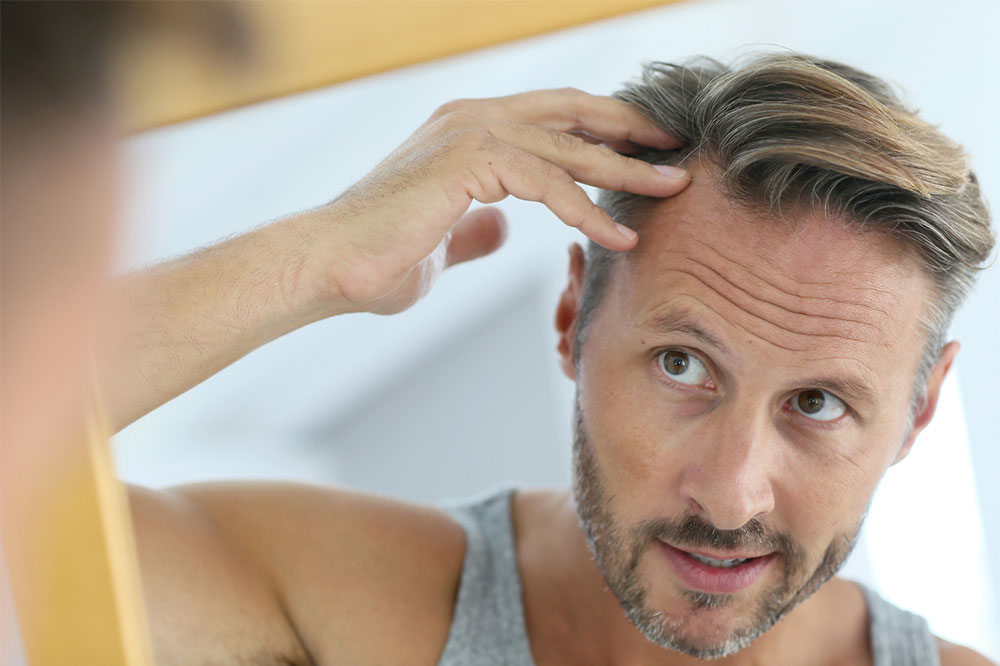
7 ways to manage hair loss
Hair loss or alopecia affects more than 80 million citizens. But how do you determine if the hair fall is normal or not? On average, most people lose about 100 strands of hair daily, regularly replaced by new ones. This process does not affect the hairline, making the difference not noticeable. However, if you observe a receding hairline or lower hair volume, consult a specialist at the earliest. Here are some ways to manage hair loss:
Include protein-rich foods
One of the major reasons for hair fall is inadequate protein intake. The deficiency of proteins has shown adverse effects on the hair follicles as they seem to go in a “resting” phase. Animal, plant, or dairy-based products like chicken, tofu, lentils, nuts, eggs, and milk can help fulfill the protein requirements. Opt for supplements if the solid food does not provide enough protein.
Boost vitamin intake
Apart from protein, sufficient vitamin intake is necessary. The four essential vitamins that are required for hair growth are:
Vitamin A – Moisturizes and enhances growth
Vitamin B – Oxygenates and carries nutrients to the scalp
Vitamin C – Boosts collagen production and prevents premature greying
Vitamin E – Prevents oxidative damage and promote hair growth
An iron deficiency that results in anemia can also cause hair fall. Vitamins and minerals can be found in green leafy vegetables, fortified foods, and health supplements.
Non-prescription treatment options
Minoxidil is a treatment option that can be used for hair fall. It is available in most pharmacies without a prescription and comes in a liquid, foam or shampoo form. It can be directly applied to a clean scalp and is available in strengths ranging from 1% to 5% to regrow hair. Contact a hair expert for more information on this product and the best way to use it. Low-level laser therapy for hair loss is among the FDA-approved treatments to help with hair regrowth. It aims to reduce skin inflammation and initiate hair growth. The low-level laser light therapy devices often include wands and helmets and could cost anywhere between $200 and $1,000.
Stop using harsh products
Many frequently use bleach, hair dyes, hair gels, or other styling products. These products strip the hair of natural oils, making it dry and brittle. This can make it prone to thinning or increase the rate of hair fall. If possible, try avoiding or limiting the use of these hair products. Also, check your shampoo and conditioner for ingredients like parabens, sulfate, and unnatural items. Avoid them. Choose products that are organically created with natural, plant-based ingredients. When washing hair, massage the scalp gently and do not use extreme pressure.
Use conditioner
Using a conditioner after shampoo is important. Conditioner helps coat and moisturize hair, reducing the chances of breakage and split ends. The quantity of the product depends on the length of the hair; a pea-sized amount will be sufficient for short to medium length. Use a leave-in conditioner or de-tangling serum as it helps to reduce breakage, split ends, and frizz. After washing your hair, wrap it gently in a micro-fiber towel to help it dry naturally. Blow-drying should be avoided and, if needed, should be used at the lowest setting after applying heat protectant serum.
Avoid tight hairstyles
Avoid or stop wearing your hair pulled back in a sleek or high bun, pony or pigtails, cornrows, or braids. These hairstyles can lead to a specific type of hair loss known as traction alopecia. Your hairline may recede from the front. Some hairstyles can lead to permanent hair loss.
Consult a trichologist or dermatologist
Sometimes hair loss can be an indicator of other health issues. The sooner you visit the doctor, the sooner you will be aware of your health condition. A dermatologist is a specialist with advanced training to diagnose and treat conditions affecting the integumentary system, including skin, hair, and nails. They can help determine the cause of hair loss and, in many cases, successfully treat or help you manage it.
In some cases, hair loss cannot be permanently reversed, and the success of treatment options would depend on the type of hair loss. For example, cicatricial alopecia is a permanent type of hair loss, while others that are caused by stress, nutritional deficiency, or an underlying health condition are most likely to be temporary.
On the other hand, a licensed trichologist specializing in hair and scalp issues can guide you through your symptoms effectively. Do not delay the process as it may worsen the condition.
Tips for hair and scalp health
Here are a few tips that can help prevent hair loss:
Massage your scalp and hair with oil
Have a balanced, nutritious meal regularly
Use physician-prescribed and FDA-approved supplements
Get health check-ups done regularly
Manage your stress appropriately
Get adequate sleep
With a few changes in meal plans, following treatment options, and a little effort, you might be able to manage your hair better. However, it is recommended that you consult your physician to determine if the hair fall is due to any underlying health conditions. Some hair loss conditions like alopecia may require psychosocial support and a holistic approach to treat it.


